Receiving worldwide submissions, Japan's prestigious Good Design Award. Take a first-time look behind the scenes at what society needs from design, and how it can help all of us have better lives.
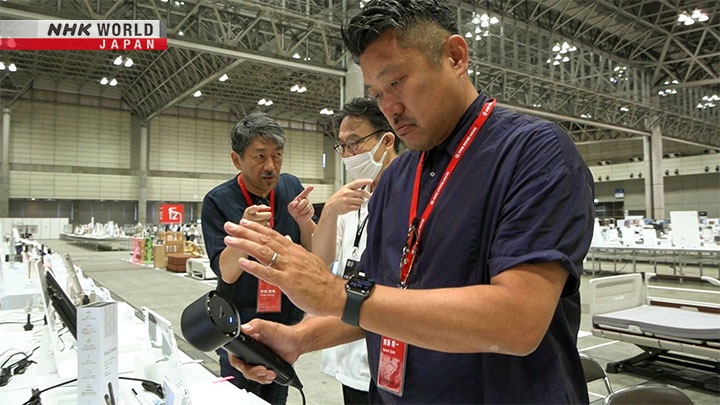
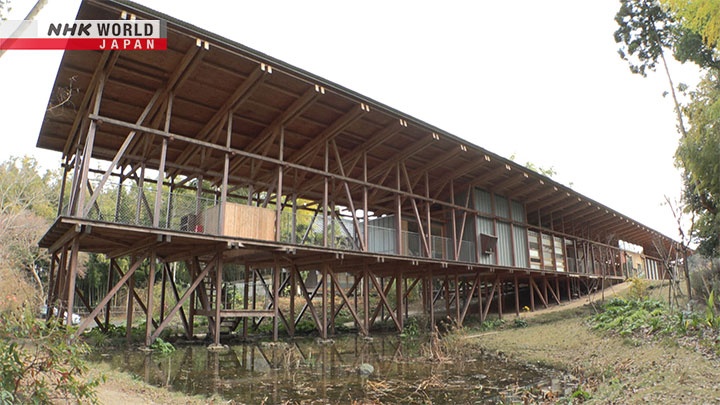
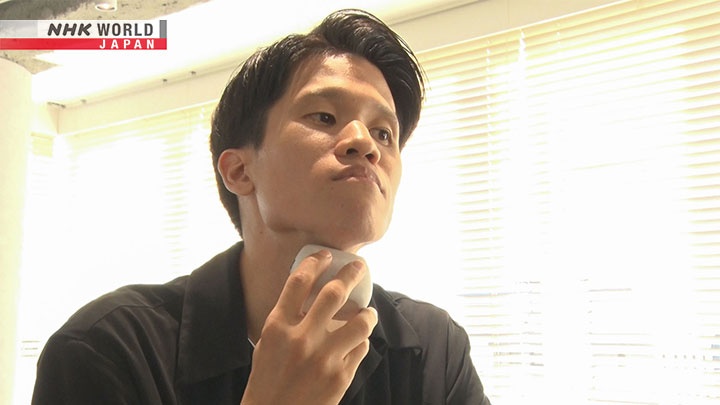
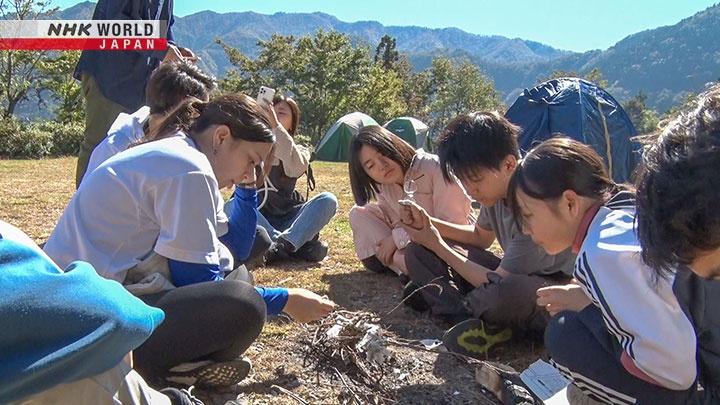
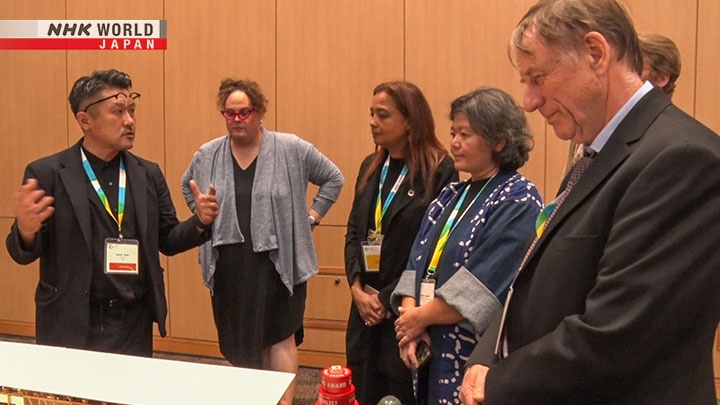
Transcript
Over here.
With entries from all over the world, this is Japan's most prestigious design competition.
The Good Design Award.
It has a storied history of over 60 years.
Many of the products evaluated here have had a major social impact
and helped Japan to become an economic powerhouse.
This portable music player won the award in 1981.
Allowing music enjoyment on the go, it represented a sea change in modern living.
1989, a cutting-edge notebook computer developed in Japan.
Now an essential tool for business.
Jump to 2023 and social change in a post-pandemic world.
Design is shifting beyond products to long-term projects with social merit.
Take a first-time look behind the scenes.
A daytime elder care facility, working to end isolation through intergenerational exchange.
A school turning away from rote learning to train the next generation of social entrepreneurs.
In recent years, entry evaluations have gotten lively.
It's an incredibly intuitive design.
Yes I know that's important, but is there anything else?
What's needed for design in the current era?
In Japan, talking design means appearance. But it's really more about the entire process.
How to design a future where life is richer for everyone?
These are the front lines.
And the winner is...
August 2023.
The venue for judging this year's Good Design Award is an exhibition hall in Chiba City.
Some 5,400 entries came from around the world.
The 3,000 that made it past the initial screening are all here to be evaluated.
From household appliances and daily necessities to the latest in mobility, including robotics.
Winners will be chosen in 19 individual categories.
In addition, one overall winner will also be selected.
Nearly 100 judges do the actual evaluation.
Product designers, academics from the art world, executives from major manufacturers-
leading professionals in various fields in Japan.
Mr. Saito, please.
This morning, someone already commented on my casual attire.
But seriously, we'll all be walking a lot, so sneakers are recommended.
Saito Seiichi is chair of the judging committee.
Involved in the evaluation process for nine years, this is his first time in the lead role.
This year's theme is "outcomes."
Does a design benefit people and society as a whole?
This year is all about social impact.
I'm proud to have such a fine group of judges representing Japan.
As much as possible we want to examine not just the products,
but the initiatives behind them, and their social mission.
It's a 360-degree view.
The judges aren't only looking at color, shape and appearance.
From materials to usability, they examine every aspect in great detail.
Is this the next one?
They examine how each one addresses diversifying needs and how they can help to improve society.
This AI-based device aids in testing for the flu.
By simply capturing an image of the throat,
it can make a diagnosis without burden on the patient.
Cute cloud-shaped tableware for children.
I see. The cloud shape makes it easier to spoon up the food.
All the curved surfaces allow you to scoop without difficulty.
Once you try it, you understand.
This is more than just hair wax in colorful packaging.
This container is very clever.
The inside is glossy and attractive, but it's also shaped to allow you
to fully use the product inside, as you can see on the bottom.
It's also cast using minimal material.
A highly usable design that shows consideration for both the consumer and the environment.
Saito believes design's role is to be useful to the world at large.
And compared to past committee chairs, his career path is unique.
Saito began as a media artist working overseas.
Since then, he's directed tourism promotional events and produced a number of art festivals.
In recent years, he's worked on revitalization projects for rural communities facing harsh economic realities.
Why isn't the wood being used?
In the old days, more people came to the mountains.
They knew the value of the trees. But not anymore.
Why not combine forestry and tourism to help revitalize the economy?
That's something I could help with.
Saito sees such intangible activities as a form of design, and a means for improving society.
The word "design" has many meanings, but Japanese uses the conceptual meaning.
Perhaps closer to the term "appearance," while in Chinese it's more like "planning."
That sense is an idea of design that's much more about the overall process.
In 2018, when Saito became assistant chair of the selection committee,
the judging criteria for the awards changed significantly.
Emblematic of this is the grand prize winner from 2021, a Tokyo area cafe.
- Hello.
- Hello. Thank you for coming.
Here, customers are served by robots.
They handle almost all operations including taking orders and setting tables.
But the robots are really just the face of the cafe.
Are you order two orange juice OK?
The robots are operated by people often living long distances away.
For example, those who are ill, or raising children,
who find it difficult to leave home -no matter where they are- are able to work here.
Through this cafe, people who once struggled to participate in society
are able to connect with people outside their homes.
The robots, as well as the cafe initiative were evaluated by the committee and received the 2021 grand prize.
"Kanpai" means "cheers." Kanpai!
I often say "sorry" or "thank you" when people do things for me.
But being able to work here means the customers actually thank me.
It makes me so happy.
After winning the award, they've worked with major industry and local government
to implement the system in over 100 locations as of 2023.
Saito hopes that evaluating such projects as a form of design will help give them broader social appeal.
From an overseas perspective, Japan often solves problems through design.
But the Japanese aren't aware of this.
People working on such initiatives are using design, very strong design.
Awareness of this would mean sharing these efforts with people overseas,
or even exporting the business model, creating industries in other countries.
But Japan is still lacking in this area.
There is now a global movement to use the power of design in ways never before imagined
to help solve some of the many problems humanity faces.
On this day, Saito attended an international conference.
Thank you for...
Held in Japan for the first time in 34 years, the World Design Assembly.
Sponsored by a UN special advisory committee, it's current aim is achieving SDGs through design.
Can poverty, discrimination, environmental issues, and other social problems be solved through design?
Top leaders from academia, government, and business in wide-ranging fields gathered.
And it's a moment that we can actually use environmental design as a mechanism to restore and grow ecosystems.
We need designers today because designers have the power to conceive innovative products.
How to propagate the idea "that design has the power to change society" in Japan?
Saito looked for hints among the various initiatives happening worldwide.
How was it?
Amidst all this, he found his way here.
A discussion of governmental initiatives.
So many things, other tools, but why design can work? Do you have any words?
Design power is the nation's power.
I think that's the key point.
A consultant for the British government.
Thanks to her group's recommendations, more than 3,000 designers have been appointed in the UK government.
And that started about 10 years ago now,
and slowly design's coming out of the lab and into policy practices.
This is the representative of a design think tank established by the Taiwanese government.
Before, Taiwan was really good in manufacturing.
Also good in semiconductor technology.
But we believe there is other than manufacturing and high tech.
So we should be looking for the other to transform the country.
The Taiwanese government established this research institute in 2020.
Under Chang's leadership, designers were paired to a variety of public services,
aimed at enhancing people's lives.
At the end of the session, Saito approached Chang.
I was really amazed by what you've been doing.
And that's something, for example, like the design council, Japan doesn't have it,
and the structure of...
Yeah, for the last few years, we think design is a good platform
for transforming government public service for people to recognize.
Appearance and aesthetic beauty is one step of design.
The next step would be process.
- And the highest level would be strategy.
- Right.
That's something we have to learn.
Saito believes in the power of design.
He found real inspiration in his conversation with Chang.
Among the entries being evaluated, Saito was particularly drawn to one product.
In the category including personal care appliances, a unique electric shaver is under review.
It's pretty interesting developing a shaver with a new shape like a small stone.
Without the customary grip of a standard shaver, it has a rounded form like a small stone.
They feel discarding unrefined mechanical design for something
that would suit any space meets the changing needs of modern life.
From a user's perspective it's ideal. It's well designed, very interesting.
It's a departure from the usual pattern of taking what the engineers develop
and designing a package around it.
A sign of a well-running design group.
Behind its development is the story of a major Japanese electronics maker's struggle for survival.
This is the shaver developer's design center.
It really is good.
Designer Bessho Ushio played a central role in its development.
Eliminating the grip found on existing shavers,
the aim was to make it feel like a natural extension of the hand.
The motivation was a changing social landscape.
The pandemic changed everything.
We spent more time at home and the way we work changed too,
with remote work becoming the norm.
It coincided with a desire in everyone for a more human way of life.
And the idea was a shaving experience that brought you closer to your own skin.
The designers themselves made the product proposal, with engineering then working to make it happen.
This is not the usual workflow for a Japanese electronics maker.
The move came about as they faced harsh realities in the changing times.
Japanese electronics makers became known for affordable high-quality products.
In the 1990s, this company was the number-three electronics firm in the world,
but lost market share to other makers, falling to 10th place by 2014.
In this period, the company reported huge losses,
and had no choice but to lay off personnel and sell off parts of its business.
One man in particular worked for reform.
The first designer to become an executive officer at the company, Usui Shigeo.
In 2007, Usui was tasked with creating a design team in China to expand their market.
He actively encouraged local designers to make product suggestions,
leading to a significant rise in sales.
But upon his return to Japan in 2016, Usui was in for a shock.
The role of designers was completely unchanged,
with the final product decided before merely determining the color and shape.
There was next to no consideration for the problems of the customers
who used the products, or for how their lifestyles had changed.
I had the sense that if something wasn't done we could just disappear.
Right this way.
Usui set out to make reforms.
The first step was moving the design center,
which had been in a corner of the factory, to downtown Kyoto.
The aim was to understand how consumers live
by being located nearby instead of off in some remote location.
We had all this greenery replaced.
The head of accounting asked why go to all the trouble and expense?
Will it actually improve your designs? And my answer was, yes absolutely.
He also made changes to the development process,
involving designers in every step from market research to advertising.
But there was much resistance in the beginning.
"Was there friction between the departments?"
Absolutely.
But I tried to put them in a positive light; friendly airspace violations.
But are such things ever really friendly?
We had complaints from every department.
To make sure they had a handle on consumer tastes,
designers went out to see what was hot and what was not for themselves.
I took a meditation class with this beautiful view.
They share the information they gather and use it to develop new product concepts.
We make consumer electronics but unless we shift our focus
to more living space-oriented products we won't have much of an effect.
Eight years since Usui began his reforms.
Proposals from the designers have become actual products.
Our new designs are customer-focused.
We have an awareness of changing lifestyles and customer values.
And I think the other departments are really listening to us now.
What is society actually looking for now?
Saito believes design has an important role to play in helping companies find an answer.
Japanese makers were good at mass production and mass markets.
But more importantly, were they able to respond to society's real needs?
It seems Japan has finally realized that it has to drop the old formula.
September.
The Good Design Award selection process is nearing its climax.
Good morning everyone.
The day has finally come.
Now's your chance for a high-res view of the designs, so you don't miss anything.
I'm giving it my best today too.
Today, representatives of the top 100 selections will be making presentations.
Participating online, judges will vote to select five finalists.
Assessing this change in society...
The developers themselves explain each design's social merit in their own words.
Saito works for a deep understanding of the philosophy behind each entry.
"You have a lot you want to see."
It's all happening at once.
Evaluation is mostly words and images, so you can't see personal passion.
These top-100 presentations are the best way to experience that.
Amidst all the high-tension presentations...
One of them has got the judges laughing.
So you're there today too? Give us a look. Wonderful!
This is a mixed care facility, and having the long porch links it to the community.
In the architecture category, one of the submissions is a daytime elder care facility.
The facility is located in Yachiyo, Chiba.
It's called "Long house with an 'engawa.'"
Okay, up we go!
The long wooden structure has a length of about 80m.
The framing is exposed and there are as few walls as possible.
People inside can easily go out, and those outside can easily sit down.
Long porches called "engawa" are found in traditional Japanese homes, connecting the inside to the outside.
Local children also come here to play,
so the "engawa" is a place for people of all generations to interact.
It's really fun.
There's no place like it. Everywhere else it's all just old folks.
The facility's director, Ishii Hidekazu.
Let's enjoy what we have. Thank you.
His previous experience in elder care is the reason he built this facility.
I've seen so many people with cognitive or behavioral issues restrained or locked up.
I wondered why they couldn't live out the end of their lives as they wanted.
They should be allowed to be themselves.
But Ishii's notion of having the freedom to come and go
is far from the conventional wisdom of most nursing care.
He had trouble finding acceptance.
To foster understanding in the community,
he created a place to interact with residents before the facility was even built.
He also made sure staff paid close attention to users on a daily basis.
Safe!
Ishii holds that facilities where users can live freely are more conducive to personal happiness.
It's easy just to lock the doors, but this leads to closed thinking.
And if no one takes the lead nothing will ever change.
Making everyone smile is my aim. See how good it can be.
One more initiative being evaluated here also got a lot of attention.
A technical college in Kamiyama, Tokushima Prefecture.
In Japan, schools known as technical colleges teach subjects
like mechanical or electrical engineering over five years.
But this is no ordinary technical college.
These are all classrooms.
The school's chief administrator is Matsuzaka Takaki.
Beyond teaching manufacturing and technology, the school aims to produce world-class entrepreneurs.
To foster creativity and leadership, study is often outside the classroom,
something still uncommon in Japanese education.
Give me a big smile!
They've also solicited donations from industry, making the school tuition-free.
Manufacturing has long supported Japan, and will continue to be important.
But what we need are entrepreneurs who not only know how to make things,
but can also use that knowledge to bring about social change.
We think such learning is an example of the education needed for the coming era.
The highlight of the course of study is a special lecture held once per week.
Our special guest entrepreneurs are...
Hoshino Yoshiharu of Hoshino Resorts, and Yamagata Design's Yamanaka Daisuke.
Today, the CEO of a major Japanese resort company and the CEO of a company
providing solutions to regional issues creating new business opportunities are the two guest lecturers.
The aim of the course is to help students learn what it takes to run a business.
What're your thoughts on building a business?
Getting everyone to agree is impossible.
If you find just 3% who see it your way, then you can get something done.
If you can do that, then the other 97% will eventually come around.
Having opened just one year earlier, the school has just started its efforts,
but Matsuzaka has big expectations.
Everyone goes through education.
If we're all aware of a problem and no one is able to solve it,
isn't that the worst case?
Instead of trying, it's only meaningful if you actually do something.
And now to select the finalists...
The committee has reached the point where the five finalists will be chosen.
They'll cast their votes based on the presentations from the top 100 entrants.
18 votes for Long House "Engawa," 17 for Kamiyama College of Design.
The daytime elder care service, Tokushima Prefecture technical college, hybrid car, no-handle shaver,
and a TV broadcaster linking citizens and scientists make up the top five.
Careful discussion follows, as the overall winner will be chosen from among them.
The first topic of discussion is the eco-friendly hybrid from a leading Japanese automaker.
I think it's the first truly stylish hybrid. Intuitively, it feels like a good design.
But some wonder if it's enough to focus on appearance alone.
It feels complete, like their best effort, and the design has a real edge.
But maybe that's all there is to it.
On the other hand, some contend that those good looks can also benefit society.
Just liking it even a little means people will drive it well and take care of it.
And I feel that this new Prius is revisiting this notion, which is a huge challenge.
The judges praised the automaker for maintaining a balance
between corporate profits and social responsibility.
But discussion soon became heated.
Well then...
Kamiyama school shouldn't be eligible. It's really still just at the beginning.
The technical college is subjected to harsh criticism.
Education takes time to see results.
They're doing a lot, but at this point all we can say is they've got funding.
I think we have to question if it really belongs in the top five.
Give it four years to develop first.
Without that, can we say it belongs? I just can't see that it does.
Others hold, that it's the school's newness that should be evaluated.
Gathering people, raising money, building a framework for a school,
this is applying the design process.
Even if it fails, it's groundbreaking.
From an architectural perspective, the school is very well designed.
A beautiful school for motivated students could lead to major change in education.
As the discussion reached an impasse, Saito himself weighed in.
There's some question as to what the Good Design Award really is.
I see our role as admiring and supporting new buds as they sprout and grow.
We don't know what will happen next, but the first year of setup until now
is something we can evaluate from the perspective of the award committee.
A simple majority vote is taken to determine if the technical college will be included among the finalists.
If you think it should be included, please raise your hand.
Yes. And that's a majority.
So, are these the finalists for 2023?
In the technical college, I see a practical solution to the difficulties of rural Japan.
The Good Design Award could inspire other localities to emulate this model.
Their methodology could hint at a way to help strengthen other regions.
October 25th.
The overall winner of this year's Good Design Award is about to be decided.
From over 5,400 entrants, representatives of the five finalists make presentations before voting commences.
Over one hundred committee members as well as prize-winners other than the five finalists will vote,
reaching the final decision after online voting by the general public.
The finalists wait for the main event to begin.
I shaved with it this morning.
The last chance to make the case for their designs, they'll each give a four-minute presentation.
With COVID-19 restrictions finally lifted,
some 1,200 spectators are here to watch the grand prize announcement.
Committee Chair Saito, please.
Hello. Hello!
It takes courage to take the first step.
I've seen so many people taking initiative, doing what nobody else is doing,
making new markets, no matter how small.
We're proud of the Good Design Award.
We hope this will be a chance for people worldwide to learn more about it.
With the huge audience watching, the presentations begin.
For Long House "Engawa," Ishii Hidekazu.
This is how I usually dress.
Economy, economy, economy.
Japan has become stratified.
People with disabilities, separate from children, separate from the elderly...
My question is why? And I'm working to put solutions into practice.
I have doubts about the thinking that more features are always better.
Wouldn't it be better if a shaver could be operated intuitively?
We're still in the process of evaluating ourselves as an educational institution.
But if there's anything we can do now, it's to shine a light of hope for education.
How can design impact people and society?
What kinds of problems can it solve?
The presenters expressed their thoughts.
Who will take the grand prize?
And now, the winner of this year's Good Design Grand Award...
The winner, with 3,996 votes, the daytime elder care service,
Long house with an "engawa!"
Congratulations!
Please tell us how you're feeling?
Me?
Well, this is all thanks to the staff working at the facility.
That's all I have to say. Thank you all very much.
It's a disappointment.
During the presentation, I felt that there's still a lot of work to be done.
I want to focus on what's needed from this point forward.
I want to make products that question things, or that are one step ahead.
This is also a job I do out of passion.
I want to make products that make the world say, wow, I get it.
Japan's most prestigious design competition is over.
Three days later...
Saito has invited top world leaders attending the World Design Assembly,
held in Japan for the first time in 34 years.
He wants them to see his first grand prize selection as committee chair.
This is this year's grand prize.
We think like this is the design including a building and also all the social structures,
like the structure behind the building.
What do they think of the grand-prize-winning daytime elder care facility?
Often, design awards separate this sort of project as a social design award,
and so it's kind of brave for you guys to say, no this is a design award.
It's not separate from how we think about design.
It's just what we need to do is to get generations to overlap longitudinally.
Not to layer on top of one another, but here's one generation, and here's the next, like strands of a rope.
It can't just be the little shining light in amongst a lot of challenges.
Leaders from the World Design Conference gave Saito their support.
Saito's final duty as award committee chair.
A summary of the year for the executives of companies submitting entries in 2023.
Saito has reaffirmed his belief that design has the power to shape the future.
I think the days of seeing design as something beyond reach are over.
If you want to improve something, you share the knowledge you've gained
and then look for a way to take action.
With this, we can form a link to tomorrow.
The Good Design Award selection holds a message for the future.
Will it be heard clearly enough to change the world?
Only time will tell.